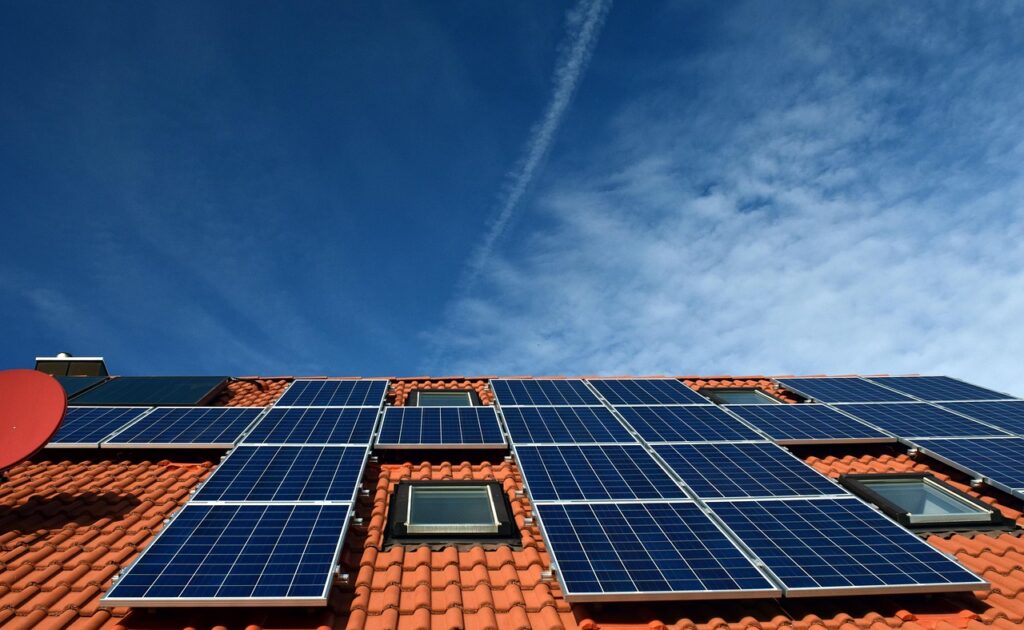Building integrated solar refers to the technology that weaves photovoltaic systems directly into the structural and architectural elements of buildings. Instead of traditional solar panels mounted on rooftops, this approach uses materials like windows, facades, and roofs to generate electricity while serving their conventional purposes. This integration transforms building components into dual-function assets that both protect and power the structure.
This innovation promotes energy efficiency by converting sunlight into electricity exactly where it’s needed, minimizing transmission losses. It also allows architects and builders to design more sustainable and visually appealing buildings without sacrificing space or aesthetics.
As solar technology advances, building-integrated solar systems offer flexible and creative options for renewable energy in urban environments. They represent a practical step toward reducing a building’s carbon footprint while maintaining functional design.
Overview of Building Integrated Solar
Building integrated solar technology merges photovoltaic systems directly within the physical structure of buildings. This approach transforms common building elements into power-generating components, creating a dual-function system that both supports the building’s integrity and produces electricity.
Definition and Core Concepts
Building integrated photovoltaics (BIPV) are solar energy systems incorporated into building components such as roofs, façades, and windows. Unlike traditional solar panels mounted on surfaces, BIPV modules replace or become a part of these structural elements.
They generate electricity while serving functional roles like weather protection, insulation, or shading. BIPV enhances architectural aesthetics through frameless, translucent modules that blend seamlessly with the building design. This integration reduces material use and can lower overall construction costs by substituting conventional building materials.
Types of Building Integrated Photovoltaics
BIPV systems come in several forms depending on their application and technology. The common types include:
- Façade-integrated systems: Solar cells embedded into vertical surfaces or curtain walls.
- Roof-integrated systems: Solar modules replace traditional roofing materials, such as tiles or shingles.
- Window-integrated systems: Semi-transparent or bifacial PV cells serve as energy-generating glazing.
- Shading devices: Louvers or canopies incorporating solar cells to produce electricity and control sunlight.
Emerging technologies like bifacial cells capture sunlight on both sides, increasing energy yield. Semi-transparent solar cells provide natural light while generating power, maintaining indoor comfort.
Key Differences From Conventional Solar Systems
Unlike conventional solar panels, which are retrofitted onto existing structures, BIPV is designed as an integral part of the building from the start. This integration minimizes visual impact and can enhance the overall architectural quality.
BIPV reduces energy loss by generating electricity directly at the point of use, improving energy efficiency. It also replaces traditional materials, potentially reducing construction weight and cost. However, BIPV installations require coordination between architects, engineers, and solar designers due to their dual-purpose nature. Conventional systems generally offer more straightforward installation but lack combined structural functions.
Applications and Benefits
Building-integrated solar systems serve multiple purposes, combining energy generation with structural components. They offer practical solutions for different building types while delivering architectural and environmental improvements.
Integration in Residential Buildings
In residential buildings, solar modules replace traditional roofing materials such as tiles or shingles. This integration preserves the building’s aesthetics while generating power for household use.
Using semi-transparent panels in windows or skylights provides light transmission alongside energy production. Homeowners benefit from reduced electricity bills and increased property value.
Installation flexibility allows adaptation to various roof styles and surfaces. Bifacial solar cells can capture sunlight from both sides, enhancing energy output in residential settings.
Integration in Commercial and Industrial Structures
Commercial and industrial buildings often feature large, flat rooftops ideal for built-in photovoltaic systems. These installations support significant energy demand reductions for lighting, HVAC, and equipment.
Facades and shading devices can incorporate solar panels, reducing cooling loads by blocking direct sunlight. This dual function improves energy efficiency and optimizes power generation.
BIPV systems help businesses meet sustainability goals and decrease reliance on grid electricity. Integration into warehouses, office buildings, and factories maximizes available surface area for energy capture.
Architectural and Environmental Advantages
Building-integrated solar solutions contribute to sustainable design by replacing standard building materials with energy-generating components. This results in a smaller carbon footprint and compliance with green building standards.
They offer design flexibility, allowing architects to maintain visual appeal while embedding renewable energy technologies. Technologies like semi-transparent and colored solar cells expand aesthetic options.
Environmentally, these systems reduce greenhouse gas emissions and urban heat island effects. They contribute to energy self-sufficiency and improve building performance through insulation and shading properties.



